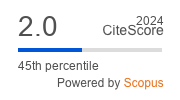How participatory design influences issue framing: a hospital case study
DOI:
https://doi.org/10.23726/cij.2023.1473Keywords:
Professional education, design training, issue framing, open cultureAbstract
This study examines the impact of a participatory design initiative on issue framing within a professional setting. In a hospital, a participatory design initiative was organised. Participants shared ideas for a more open and innovative working culture before and after the initiative. Comparing the before and after statements revealed a shift in participants' framing, indicating increased self-efficacy, empathy, and systems thinking. Ideas for change transformed from external dependencies to controllable strategies, reflecting a deeper understanding of organizational complexity and a commitment to enhance stakeholder experiences. This highlights the transformative potential of design training in empowering employees to identify and address challenges effectively.
References
Amabile, T. M., 1998, How to kill creativity (Vol. 87). Boston, MA: Harvard Business School Publishing.
Argyris, C., 1993, Knowledge for action: A guide to overcoming barriers to organisational change. Jossey-Bass Inc., Publishers, 350 Sansome Street, San Francisco, CA 94104.
Dempsey, M., Geitner, L., Brennan, A., & McAvoy, J., 2022, A review of the success and failure factors for change management. IEEE Engineering Management Review, 50(1): pp. 85-93.
Dorst, K., 2015, Frame innovation: Create new thinking by design. MIT press.
Dutton, J. E., & Ashford, S. J., 1993, Selling issues to top management. Academy of Management Review, 18(3): pp. 397-428.
Eccles, J. S., & Wigfield, A., 2002, Motivational beliefs, values, and goals. Annual review of psychology, 53(1): pp. 109-132.
Edmondson, A. C., 2003, Framing for learning: Lessons in successful technology implementation. California Management Review, 45(2): pp. 34-54.
Edmondson, A. C., 2018, The fearless organization: Creating psychological safety in the workplace for learning, innovation, and growth. John Wiley & Sons.
Edmondson, A. C., & Besieux, T., 2021, Reflections: voice and silence in workplace conversations. Journal of Change Management, 21(3): pp. 269-286.
Ford, C. M., 1996, A theory of individual creative action in multiple social domains. Academy of Management Review, 21(4): pp. 1112-1142.
Forsythe, K. (2021). Turn and Face the Strange: Shifting Organizational Paradigms with Participatory Design.
Frahm, J., & Brown, K., 2007, First steps: linking change communication to change receptivity. Journal of Organizational Change Management, 20(3), 370-387.
Gurin, P., Dey, E., Hurtado, S., & Gurin, G., 2002, Diversity and higher education: Theory and impact on educational outcomes. Harvard Educational Review, 72(3), 330-367.
Hansen, N. B., Dindler, C., Halskov, K., Iversen, O. S., Bossen, C., Basballe, D. A., & Schouten, B., 2019, How participatory design works: mechanisms and effects. In Proceedings of the 31st Australian Conference on Human-Computer-Interaction (pp. 30-41).
Hatch, M. J., 1993, The dynamics of organizational culture. Academy of Management Review, 18(4): pp. 657-693.
Jahnukainen, M., 2010, Extreme cases. In Encyclopedia of case study research (pp. 378-379). Sage.
Klehe, U. C., Fasbender, U., & van der Horst, A., 2021, Going full circle: Integrating research on career adaptation and proactivity. Journal of Vocational Behavior, 126(August 2020): pp. 103526.
Kulkarni, C., Cambre, J., Kotturi, Y., Bernstein, M. S., & Klemmer, S. R., 2015, Talkabout: Making distance matter with small groups in massive classes. In Proceedings of the 18th ACM conference on computer supported cooperative work & social computing (pp. 1116-1128).
Morrison, E. W., 2023, Employee voice and silence: Taking stock a decade later. Annual Review of Organizational Psychology and Organizational Behavior, 10.
Paton, B., & Dorst, K., 2011, Briefing and reframing: A situated practice. Design studies, 32(6): pp.573-587.
Piper, D., Iedema, R., Gray, J., Verma, R., Holmes, L., & Manning, N., 2012, Utilizing experience-based co-design to improve the experience of patients accessing emergency departments in New South Wales public hospitals: an evaluation study. Health services management research, 25(4): pp.162-172.
Schön, D. A., 1984, The reflective practitioner: How professionals think in action (Vol. 5126). Basic books.
Shin, Y., Kim, M. S., Choi, J. N., Kim, M., & Oh, W. K., 2017, Does leader-follower regulatory fit matter? The role of regulatory fit in followers’ organizational citizenship behavior. Journal of Management, 43(4): pp. 1211-1233.
Smith, R. C., & Iversen, O. S., 2018, Participatory design for sustainable social change. Design Studies, 59: pp. 9-36.
Sundler, A. J., Lindberg, E., Nilsson, C., & Palmér, L., 2019, Qualitative thematic analysis based on descriptive phenomenology. Nursing Open, 6(3): pp. 733-739.
Tangirala, S., & Ramanujam, R., 2012, Ask and you shall hear (but not always): Examining the relationship between manager consultation and employee voice. Personnel Psychology, 65(2): pp. 251-282.
Unsworth, K. L., & Clegg, C. W., 2010, Why do employees undertake creative action? Journal of Occupational and Organizational Psychology, 83: pp. 77–99.
Yue, C. A., Men, L. R., & Ferguson, M. A., 2019, Bridging transformational leadership, transparent communication, and employee openness to change: The mediating role of trust. Public relations review, 45(3), 101779.
Downloads
Published
How to Cite
Issue
Section
Categories
License
Copyright (c) 2023 Floris Van der Marel

This work is licensed under a Creative Commons Attribution 4.0 International License.
Authors who publish with this journal agree to the following terms:
- Authors retain copyright and grant the journal right of first publication with the work simultaneously licensed under a Creative Commons Attribution License that allows others to share the work with an acknowledgement of the work's authorship and initial publication in this journal.
- Authors are able to enter into separate, additional contractual arrangements for the non-exclusive distribution of the journal's published version of the work (e.g., post it to an institutional repository or publish it in a book), with an acknowledgement of its initial publication in this journal.
- Authors are permitted and encouraged to post their work online (e.g., in institutional repositories or on their website) prior to and during the submission process, as it can lead to productive exchanges, as well as earlier and greater citation of published work (See The Effect of Open Access).


